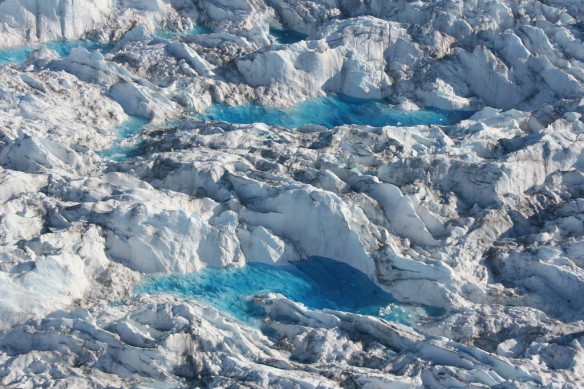
Melting pound on the ice sheet. Photo source: ©© Greenland
Excerpts;
Over the past two decades, ice loss from the Greenland Ice Sheet increased four-fold contributing to one-quarter of global sea level rise. However, the chain of events and physical processes that contributed to it has remained elusive. One likely trigger for the speed up and retreat of glaciers that contributed to this ice loss is ocean warming.
A review paper by physical oceanographers Fiamma Straneo at Woods Hole Oceanographic Institution (WHOI) and Patrick Heimbach at MIT published in Nature explains what scientists have learned from their research on and around Greenland over the past 20 years and describes the measurements and technology needed to continue to move the science forward.
The Greenland Ice Sheet is a 1.7 million-square-kilometer, 2-mile thick layer of ice that covers Greenland. At its edge, glaciers that drain the ice sheet plunge into coastal fjords that are over 600 meters deep, thus exposing the ice sheet edges to contact with the ocean. The waters of the North Atlantic Ocean, which surround southern Greenland, are presently the warmest they have been in the past 100 years…









